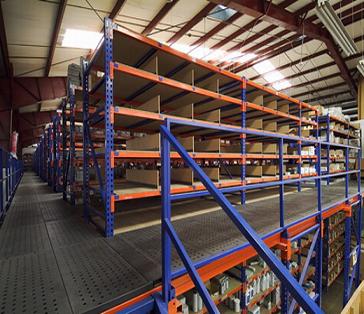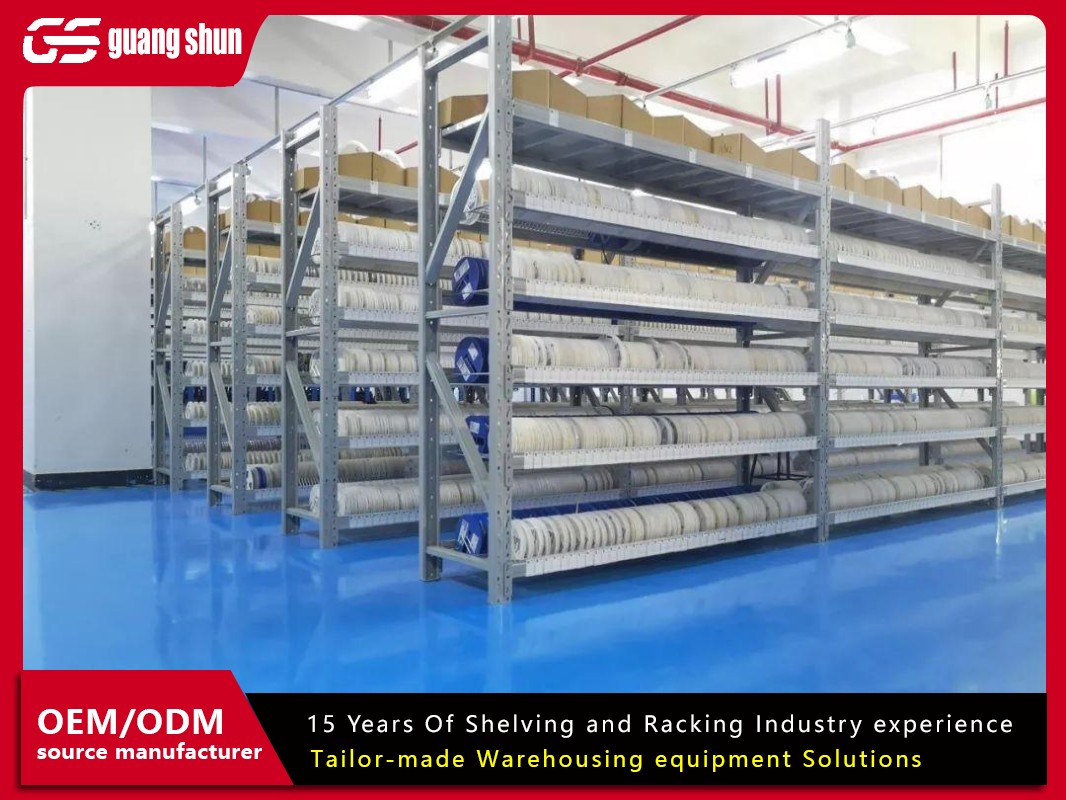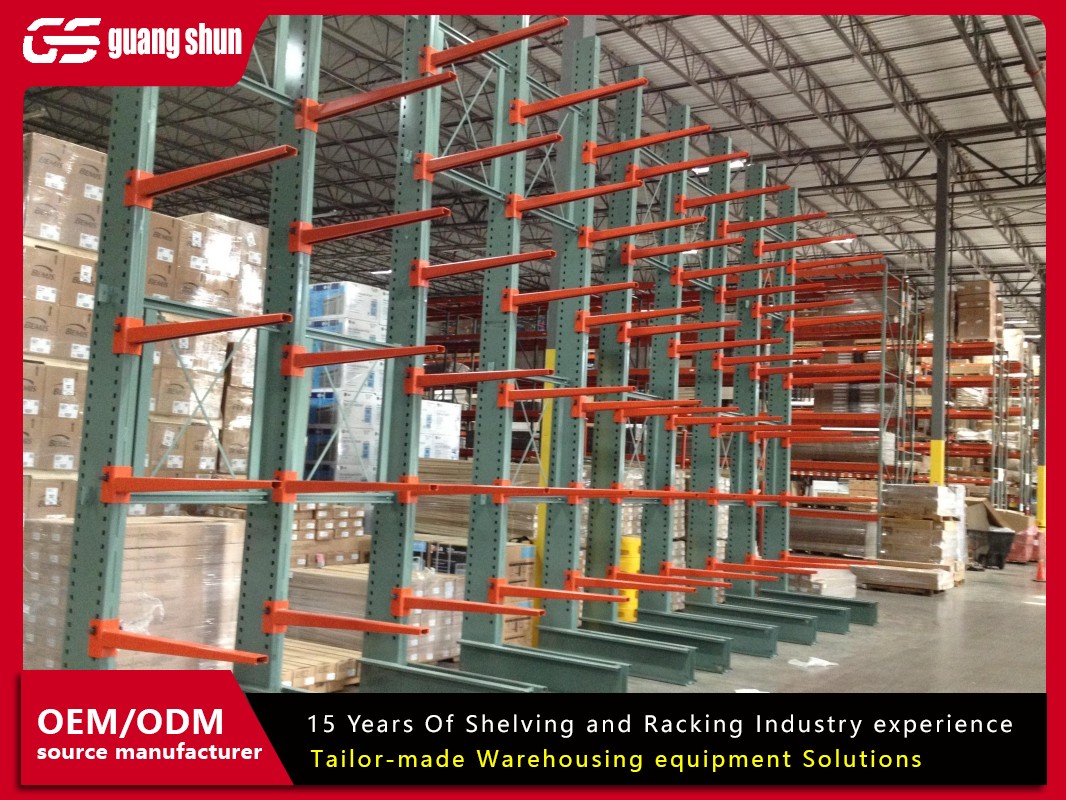In the relentless pursuit of warehouse efficiency, the question is no longer if to automate, but how. At the heart of this transformation lies a critical component often overshadowed by the robots themselves: the storage structure. While traditional shelving has been the backbone of warehouses for decades, a new standard is emerging. ASRS racking represents a fundamental shift, moving storage from a passive holding area to an active, integrated part of the fulfillment process. This isn't just an upgrade; it's a complete reimagining of storage density, accuracy, and operational flow.
For any business evaluating their storage solutions, the choice often boils down to a strategic comparison between conventional methods and automated systems. Understanding the core differences, advantages, and ideal applications of ASRS racking is essential for making an informed capital investment that will drive growth for years to come.

What Exactly is ASRS Racking?
Let's demystify the term. ASRS, or Automated Storage and Retrieval Systems, refer to computer-controlled systems that automatically place and retrieve loads from defined storage locations. The ASRS racking is the physical structure—the high-rise framework—that houses these loads and is specifically designed to interface seamlessly with the automated machinery, such as cranes, shuttles, or robots.
Unlike standard pallet racking, which is built for forklifts and human operators, ASRS racking is engineered with extreme precision. It provides the guiding pathways for the automated cranes, ensuring perfect alignment for the swift and safe insertion and extraction of pallets, totes, or cases. This system transforms vertical space from a rarely-used asset into a primary storage zone, often reaching heights that would be impractical or unsafe for manual operation.
The Core Advantages of Implementing an ASRS System
Moving to an automated storage solution isn't just about speed; it's about building a smarter, more resilient operation. The benefits of a well-integrated ASRS racking system touch every aspect of warehouse management.
Maximized Storage Density and Cube Utilization: Traditional shelving requires wide aisles for forklifts to maneuver. ASRS racking eliminates this need. The automated cranes run on narrow rails within the structure itself, allowing aisles to be just inches wider than the load. This "cube utilization" means you can store significantly more inventory within the same—or even a smaller—footprint by building upwards and minimizing wasted aisle space.
Dramatic Gains in Accuracy and Inventory Control: Human error in picking and put-away is a major source of loss. An ASRS racking system is governed by a Warehouse Management System (WMS) or Warehouse Control System (WCS). Every item has a predefined location. The system tracks all movements with near-perfect precision, slashing mis-picks, lost inventory, and cycle counting inaccuracies. You gain real-time, exact visibility into your stock levels.
Enhanced Workplace Safety: Warehouse operations, especially those involving forklifts and high-level manual picking, carry inherent risks. By automating the storage and retrieval process, an ASRS racking system drastically reduces the need for personnel to work in high-traffic aisles or operate heavy machinery. This leads to a safer work environment and can significantly lower insurance costs.
Unmatched Labor Efficiency and Scalability: These systems operate 24/7 without breaks, fatigue, or shifts changes. They optimize travel paths to complete requests in the shortest possible time. While they don't eliminate the need for human workers, they reallocate labor to more value-added tasks like quality control, packing, and system management. This efficiency also makes scaling your operation more predictable, as adding throughput doesn't always require a linear increase in labor.
How ASRS Racking Works: The Mechanics Behind the Automation
The magic of an automated storage and retrieval system is in its seamless coordination. The process typically follows this pattern:
The Request: An operator or a central system sends a command to retrieve a specific item or store a new load.
System Processing: The WMS/WCS identifies the optimal storage location (for put-away) or the exact location of the requested item (for retrieval). It considers factors like stock rotation (FIFO/FILO), weight distribution, and future access patterns.
Machine Dispatch: The system dispatches the appropriate automated machine—often a aisle-changing crane or a fixed-aisle crane—to the target location within the ASRS racking.
Execution: The crane travels to the precise horizontal and vertical coordinate, extends its shuttle or forks, and securely picks up or deposits the load.
Delivery: The retrieved load is then delivered to a designated pick-up station or conveyor system, where a worker or another automated system takes over for the next step in the process. This entire sequence often takes just minutes, showcasing the incredible efficiency of a fully integrated ASRS racking setup.

Is ASRS Racking the Right Fit for Your Operation?
While powerful, ASRS racking is not a one-size-fits-all solution. It delivers the highest return on investment in specific scenarios. Consider an ASRS racking system if your business faces:
High-Volume Operations: You handle a large number of SKUs with frequent movements.
Space Constraints: Your current facility is landlocked, and expanding the footprint is cost-prohibitive.
Labor Market Challenges: You struggle with labor availability, high turnover, or rising wage costs.
Extreme Accuracy Demands: Your industry requires near-perfect order accuracy (e.g., pharmaceuticals, aerospace, high-value electronics).
Cold Storage Environments: Automating storage in freezer warehouses improves efficiency and creates a much safer, more comfortable work environment for employees.
Key Considerations Before Investing
Implementing an ASRS racking system is a significant undertaking. Key factors to evaluate include:
Initial Capital Outlay: The investment is substantially higher than traditional shelving. A detailed ROI analysis is crucial.
System Integration: The ASRS racking and machinery must be perfectly integrated with your existing WMS, ERP, and conveyor systems.
Maintenance and Support: These are complex electromechanical systems that require specialized technical support and a proactive maintenance plan to ensure uptime.
Flexibility: Some systems are better suited for high-throughput of similar items, while others are more adaptable to a constantly changing SKU mix. Your business's growth trajectory must be factored into the design.
The evolution from traditional shelving to ASRS racking is a defining trend in modern logistics. It’s a move from simple storage to intelligent inventory management. By conducting a thorough comparison of your current costs, challenges, and growth goals against the capabilities of an automated storage and retrieval system, you can determine if this technology is the key to unlocking your warehouse's full potential. The future of warehousing is vertical, dense, and automated, with ASRS racking providing the foundational framework for that future.
Frequently Asked Questions (FAQ) about ASRS Racking
Q1: What are the different types of ASRS racking systems available?
A1: ASRS racking systems come in several configurations to suit different needs. Common types include Unit-load ASRS for full pallets, Mini-load ASRS for smaller totes and cases, and Vertical Lift Modules (VLMs) which are a type of automated storage system where an inserter/extractor retrieves trays and brings them to an ergonomic access point. Shuttle-based systems are also popular, where autonomous shuttles run on levels of the racking to store and retrieve items.
Q2: How does the cost of an ASRS racking system compare to traditional pallet racking?
A2: The initial investment for an ASRS racking system is significantly higher than for traditional pallet racking. This cost includes not just the racking structure itself, but also the automated machinery, software integration, and installation. However, the comparison should be based on Total Cost of Ownership (TCO). An ASRS racking system often provides a strong ROI through massive savings in labor, vastly improved space utilization, reduced product damage, and near-perfect inventory accuracy.
Q3: Can an ASRS system be integrated into an existing warehouse?
A3: Yes, it is often possible to integrate an ASRS racking system into an existing facility, but it requires careful planning. Factors such as ceiling height, floor flatness, column spacing, and building structural integrity must be evaluated. A professional assessment is necessary to determine if a retrofit is feasible or if a new build is more practical to fully leverage the benefits of the automated storage and retrieval system.
Q4: What kind of maintenance do these automated storage systems require?
A4: ASRS racking systems require proactive and scheduled maintenance to ensure high uptime and longevity. This includes regular inspections of the racking structure for integrity, lubrication of moving parts, checks on crane rails and guides, and software updates. Most companies rely on annual service contracts with the system provider or a specialized third-party to perform preventative maintenance and provide rapid response for any unexpected issues.
Q5: Are there weight or size limitations for loads stored in an ASRS?
A5: Yes, every ASRS racking system is designed with specific load capacity and dimension limits. Unit-load systems can typically handle very heavy pallets, often several thousand pounds, while mini-load systems are designed for lighter totes. The design phase of the automated storage and retrieval system is critical to define these parameters based on your inventory profile, ensuring the equipment and racking are perfectly sized for your products.







